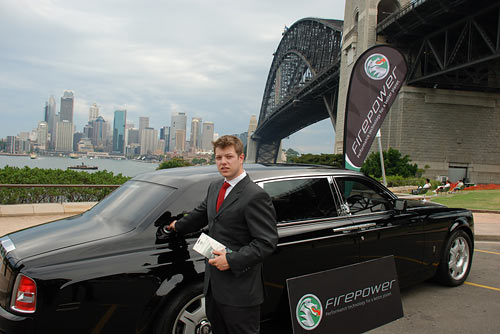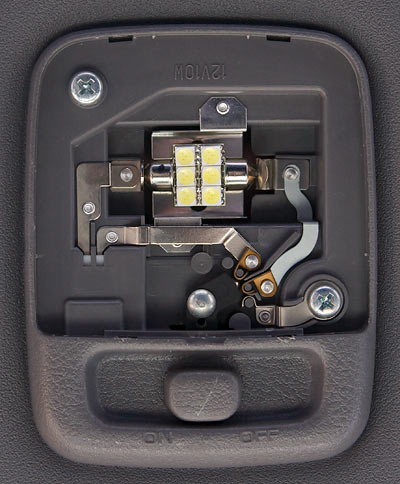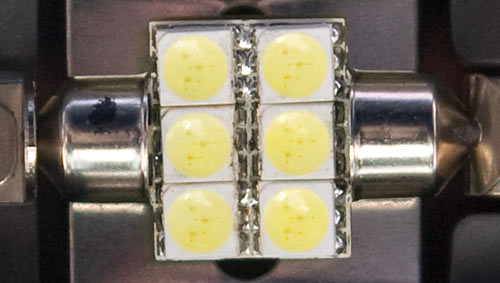Stephen Moss, CEO of Firepower International, hasn't breathed a word about suing me since starting our correspondence with that threat. But he sent me a report yesterday. It was apparently done for Firepower by a Shell laboratory in Germany.
Just like all the best scientific studies, this one is a big secret, so I'm not allowed to make it available for download.
The test was of some substance referred to as "Polyfuel Type #1", which was a thick gelly that had to be mixed with quite a lot of diesel before it became liquid enough to be poured into a fuel tank.
(Note - I originally said "jelly" in the above sentence, rather than using the non-word "gelly" which featured in the original report, specifically in the phrase "...which resulted in a gelly-like composition." I presumed that this spelling was just a typo or a German translation glitch or something, but apparently the use of the letter J in that word greatly angered someone representing himself as being from Firepower. He then contacted Blogsome and made a number of demands, one of which was that I change the spelling to what it said in the original. No problem, Mister Firepower Spelling Expert!)
Mr Moss tells me that this thick... gelly... was actually just what you get when the almost-on-sale "Firepower Pill" is ground up and mixed with diesel fuel, and it was presented this way to make the test easier.
Since the report says the gelly had to be pre-mixed, for some time, with ten litres of diesel before it was thin enough to use, this raises some obvious questions about what the heck the Firepower Pill actually is. I'm also personally willing to bet that if you crush one of the (rather small) Firepower Pills and put it in some diesel yourself, you will not get any sort of gelly, or even jelly. Mr Moss has offered me some Pills to test for myself; I may take him up on that, just to see if they do gel diesel, or petrol, or anything else.
Anyway, whatever the heck it was that they were actually testing did, according to this report which Moss says I may not distribute, reduce the fuel consumption of a Volvo FM12 truck, in a proper rolling-road drive cycle test, by about four per cent. Less on the highway cycle, more on the city-street cycle, where the engine was occasionally idling. Emissions improved, slightly, too.
So we've got a test of something that I have to trust Mr Moss was in some way related to the Pill they're now (almost) selling, on a large diesel vehicle (the Firepower Pill is meant to work on any petrol or diesel vehicle), which showed only a 4% fuel economy improvement, versus the 10%-to-30% claims Firepower make on their site and in their proudly presented anecdotal evidence.
In our correspondence, Moss has trotted out the "unburned fuel" fallacy, and stuck to it with some enthusiasm, even though Total Hydrocarbon ("THC"; quiet, you boys in the back row) emissions figures make clear that almost all of the fuel that goes into any modern engine is fully combusted.
The secret Shell report itself makes this clear. Here's a darn great diesel truck, consuming much more fuel per kilometre than a passenger car, yet even on the urban cycle where it's occasionally not moving at all (and before the magic Firepower substance was administered) it still only emitted 0.456 grams of THC per kilometre. It consumed 0.422 litres of fuel per kilometre on that test, which has a density of about 850 grams per litre, so it burned about 358 grams of diesel, and emitted less than half a gram unburned.
In other words, the worst it ever managed was burning 99.87% of the fuel that went into it.
Now, according to the report the 0.456 gram-per-kilometre THC figure dropped to only 0.389g/km when the Firepower concoction was added to the fuel; reducing THC emissions by 15% is a good thing, as long as there are no hidden downsides. But the notion that this reflects a more complete burning of the fuel which could have some perceptible effect on power or economy is ridiculous, since 15% of 0.13% is, to a first approximation, bugger all.
Mr Moss went on to favour me with the "catalyst" fallacy, which I have addressed on previous occasions, including the very first time my then-so-innocent eyes fell upon Firepower, back in 2006. In brief: The common fuel-additive claim that it makes the fuel burn faster (from the buyfirepowerpill.com site: "Treated fuel burns 25-30% faster..."), or more easily, is nonsense. Fuel in a modern engine already burns pretty much optimally; if it burns faster or lights more easily, all that'll give you is engine knock, which is a bad thing.
Mr Moss also had a go at the "engine cleaning" fallacy, and just when I was wondering if I perhaps wouldn't be hearing it, the "conspiracy theory" fallacy as well. And he reiterated his great fondness for anecdotes.
And that, plus this super secret report I'm not allowed to show you, is all he's got.
Tim Johnston, the Chairman of Firepower Holding Group, has been selling fuel pills with these same claims since 1992.
Mr Moss seems to be distancing his outfit, Firepower International, from Tim Johnston - he told me that "Firepower International is not owned by Firepower Group, I think some articles have made the mistake of assuming we are the same entity. Firepower International is privately owned by a collection of investors and owns the worldwide rights to the Firepower Pill."
(And interestingly, a reader's just pointed out to me that the firepowerinternational.com domain is actually registered to Stephen Moss.)
But Firepower International, or Group, or Whoever, have all engaged in conspicuous displays of wealth - sponsoring sports teams and, Mr Moss insists, actually buying the million-dollar Rolls-Royce he was until recently depicted next to on the buyfirepowerpill.com site.
So you'd think that at some point over the last several years they might have found the time to spend a measly hundred grand on used cars to hand, along with some Firepower Pills, to an automobile association or technical college or something for proper testing.
But no. The Australian Automobile Association say they'd love to talk to Firepower, but over the whole of last year Firepower have unaccountably failed to pick up the phone.
So that's it. The crowning jewel of Firepower's evidence is this one secret report from 2004, of a substance that resembles their Pills in no way whatsoever, and which found not even half of the smallest benefit that Firepower allege is commonplace in all sorts of vehicles.
Mr Moss keeps urging me to just try the magic Firepower pills in my own car, whereupon he says I'll be unable to deny the obvious power gains, if not the improvement in fuel economy.
But countless people - probably millions of people - have tried snake-oil fuel products in the past and been convinced of just those improvements, because they wanted to see them. They wouldn't have bought the darn stuff in the first place if they didn't think it was at least likely to work; that belief sets you straight on the train to a textbook case of confirmation bias.
Even if the product is something that's actively harmful at best, like Slick 50, you can find a long queue of people who'll swear, hand on heart, that it works.
You can also, of course, find a long queue of people who'll swear that using an electric fan in a closed room is deadly dangerous, that elves are real, or that a fence post near Coogee Beach was an apparition of the Virgin Mary.
(I have personally witnessed that last queue. But not Mary.)
The first principle of science, though, is that you must not fool yourself - because you are the easiest person to fool. If you do an unblinded, uncontrolled test like just dropping a pill into your petrol tank and driving around, you can very easily completely fail to get any closer to the truth than if your test involved throwing darts at a piece of graph paper.
We've been working on science for about the last 400 years, and it's really worked out quite well. If you're lucky enough to live in a First World country, practically everything you see, touch and do on a daily basis is either entirely the product of, or has been almost unrecognisably improved by, science.
And science is hard. But it's worth it.
It's long past time for Firepower to put up or shut up.


